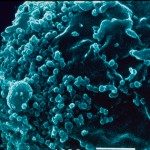Link to Pubmed [PMID] – 36560972
Link to DOI – 99217610.3389/frph.2022.992176
Front Reprod Health 2022 ; 4(): 992176
The human vaginal microbiota has a central role in the regulation of the female reproductive tract (FRT) inflammation. Indeed, on one hand an optimal environment leading to a protection against sexually transmitted infections (STI) is associated with a high proportion of Lactobacillus spp. (eubiosis). On the other hand, a more diverse microbiota with a high amount of non-Lactobacillus spp. (dysbiosis) is linked to a higher local inflammation and an increased STI susceptibility. The composition of the vaginal microbiota is influenced by numerous factors that may lead to a dysbiotic environment. In this review, we first discuss how the vaginal microbiota composition affects the local inflammation with a focus on the cytokine profiles, the immune cell recruitment/phenotype and a large part devoted on the interactions between the vaginal microbiota and the neutrophils. Secondly, we analyze the interplay between STI and the vaginal microbiota and describe several mechanisms of action of the vaginal microbiota. Finally, the input of the NHP model in research focusing on the FRT health including vaginal microbiota or STI acquisition/control and treatment is discussed.

